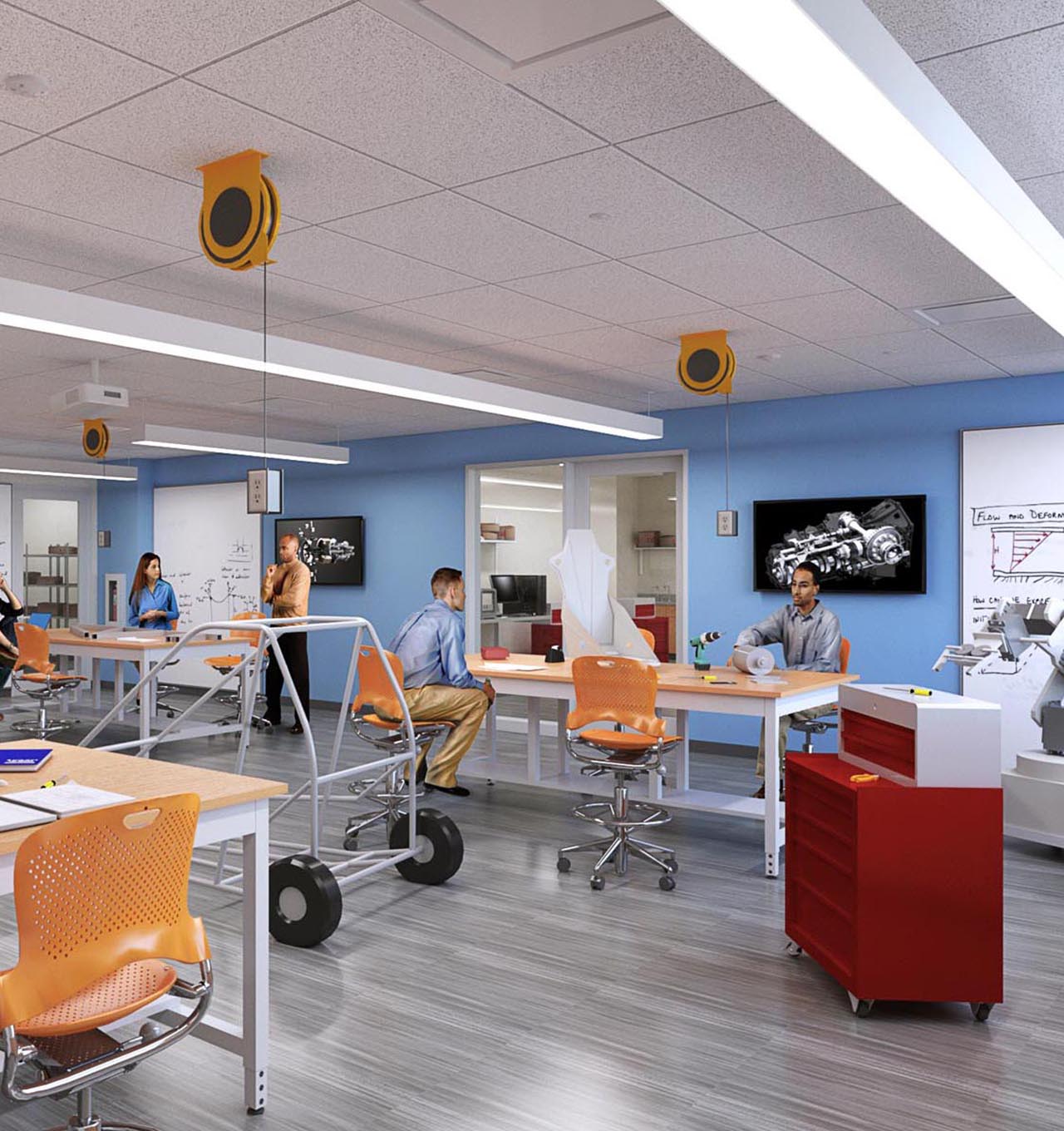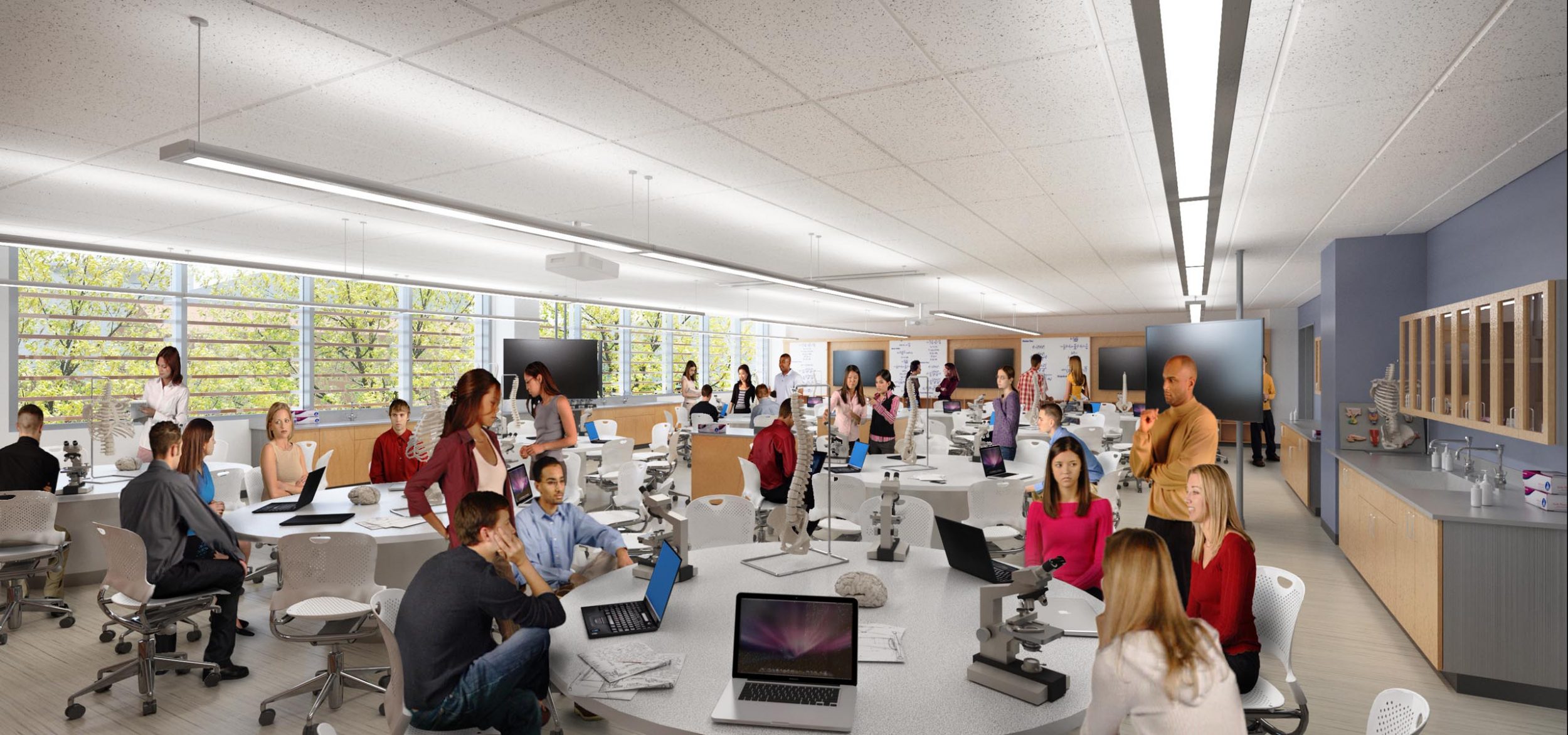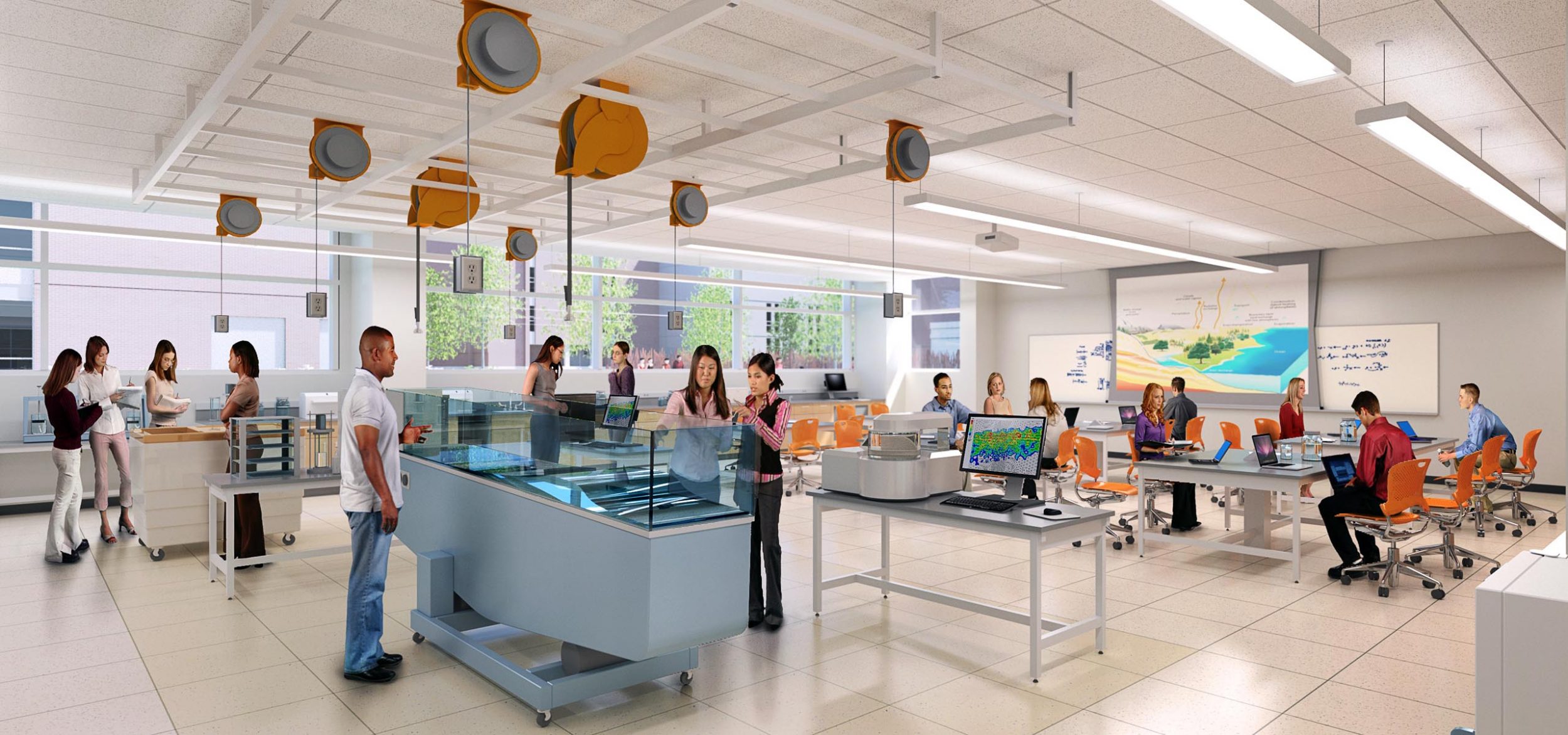Reframing Science Education
Broadening Student Access to the Sciences
University of Mississippi
STEM Building
Oxford, Mississippi
Challenge: The University of Mississippi 2020 Strategic Plan proposed two major goals:
1. lead the State and region in preparing STEM professionals and leaders—especially from underrepresented groups—and improve science literacy of the general public, and
2. construct a state-of-the-art learning facility for STEM designed to attract students to these majors, which are critical to the economic competitiveness of the State and the nation.
Solution: To meet the challenge, the program was designed to provide basic science teaching labs (42%), theme-based engineering teaching and project labs (19%), and shared space (39%) consisting of a variety of classrooms, student, and administrative spaces.
The organizational strategy integrated the various disciplines throughout the building in reasonable, functional clusters aiming to minimize departmental silos and to meet the program criteria stated above:
- Cross-disciplinary and active learning spaces are showcased on the lower levels adjacent to the largest social and break-out space.
- A student center, providing academic support for students to succeed, is strategically located in an attractive central space, decoupled from the stigma of tutoring and supplemental instruction.
- Break-out space equipped with power and connectivity is planned at every level of the building.
- Every type of study space is provided to accommodate different styles of studying and learning.
- Each teaching lab has vision glass, displaying and demystifying science, engineering, and technology.
- All of the teaching labs are designed using a common module that allows future retrofits should enrollment demands change from projected utilizations.
- The building is zoned in clusters of energy-intensive wet labs, dry less-energy-intensive labs, and office and classroom functions.
- The most promising feature of all is the arrangement of program spaces around a social hub that functions as the heart of the building; geometrically designed north-facing light monitors provide daylight all through the space to the ground-level Student Commons.
Benefit: In addition to the Engineering theme-based interdisciplinary labs that might be used by different constituents in a problem-based learning format, opportunities for sharing space and resources create a collaborative, inclusive way of thinking:
- The faculty benefits from having access to a variety of classroom sizes and configurations.
- Departments (and their budgets) benefit from the more efficient use of shared resources, as they are more fully utilized by a larger group of users.
- Shared interdisciplinary spaces promote contemporary teaching modalities, inquiry-based thinking, and problem solving, in which students thrive and succeed.
- Open communicating stairs and touch-down stations not only enhance serendipitous encounters and interaction, but create a sense of place and ownership for students and instructors alike.





